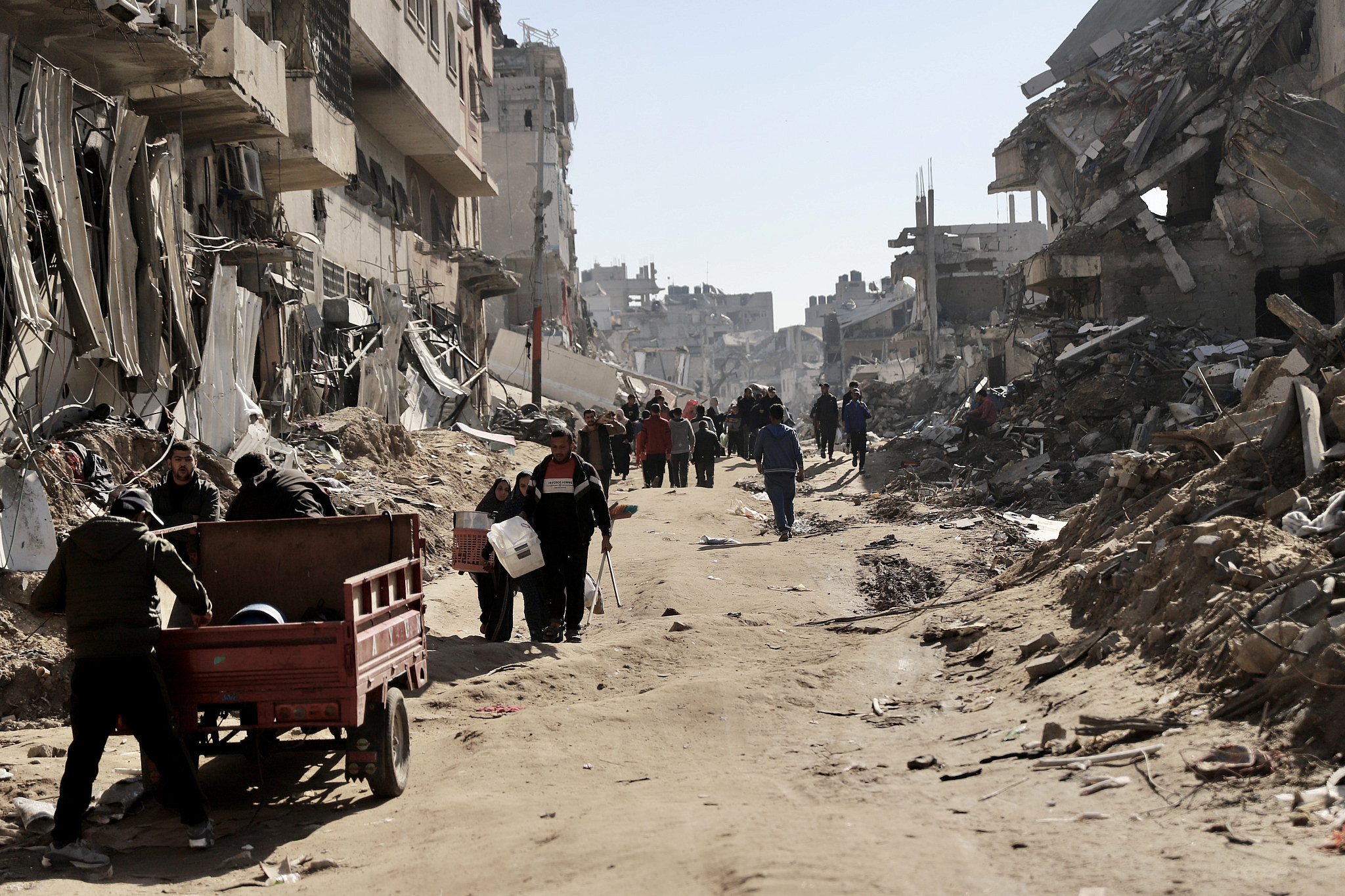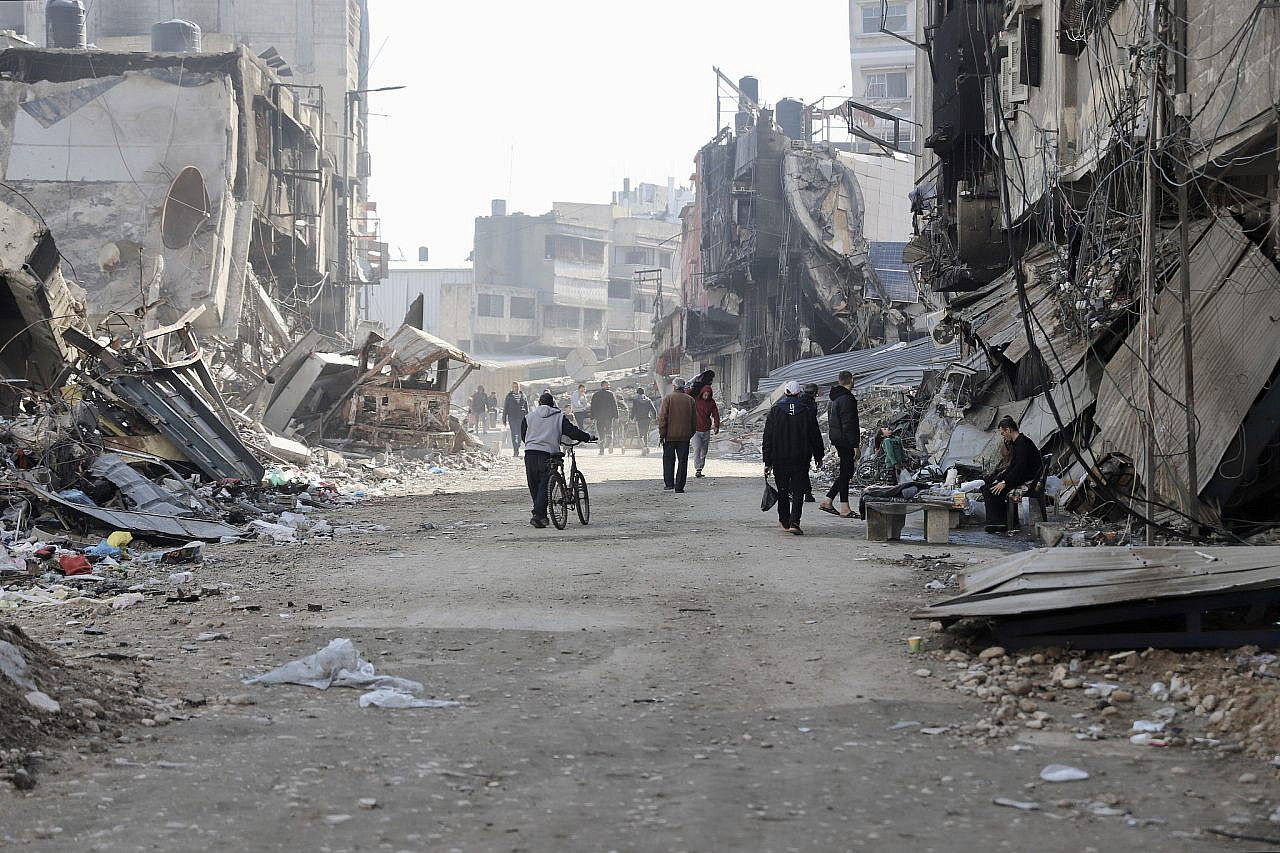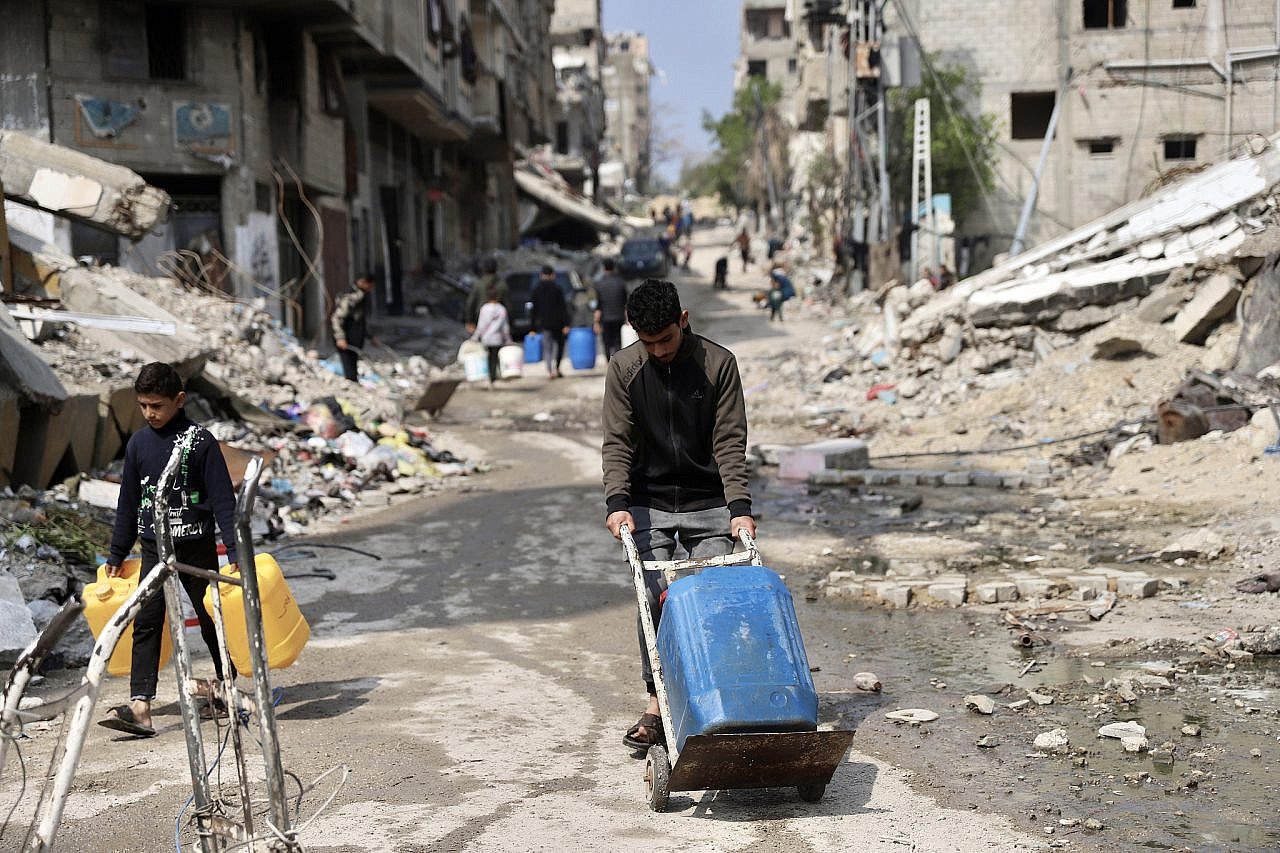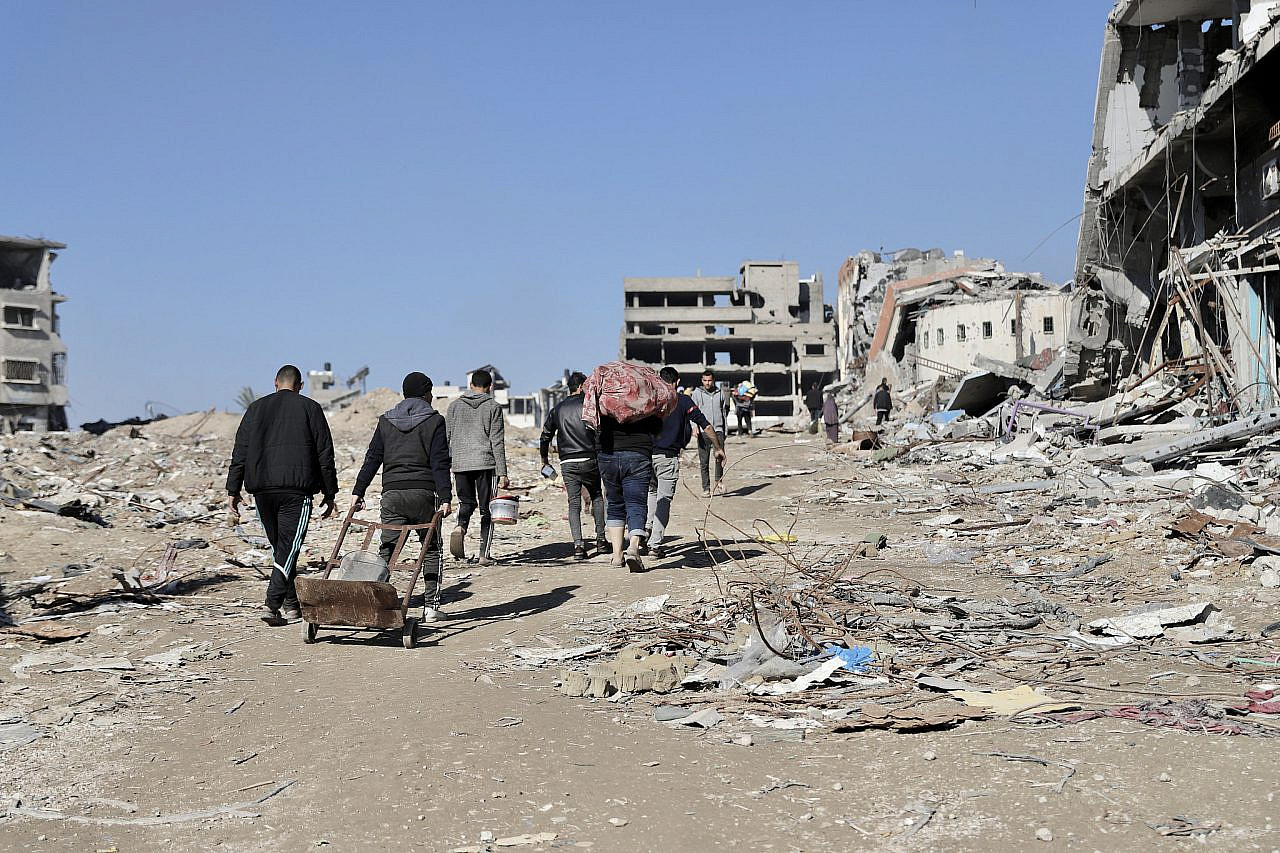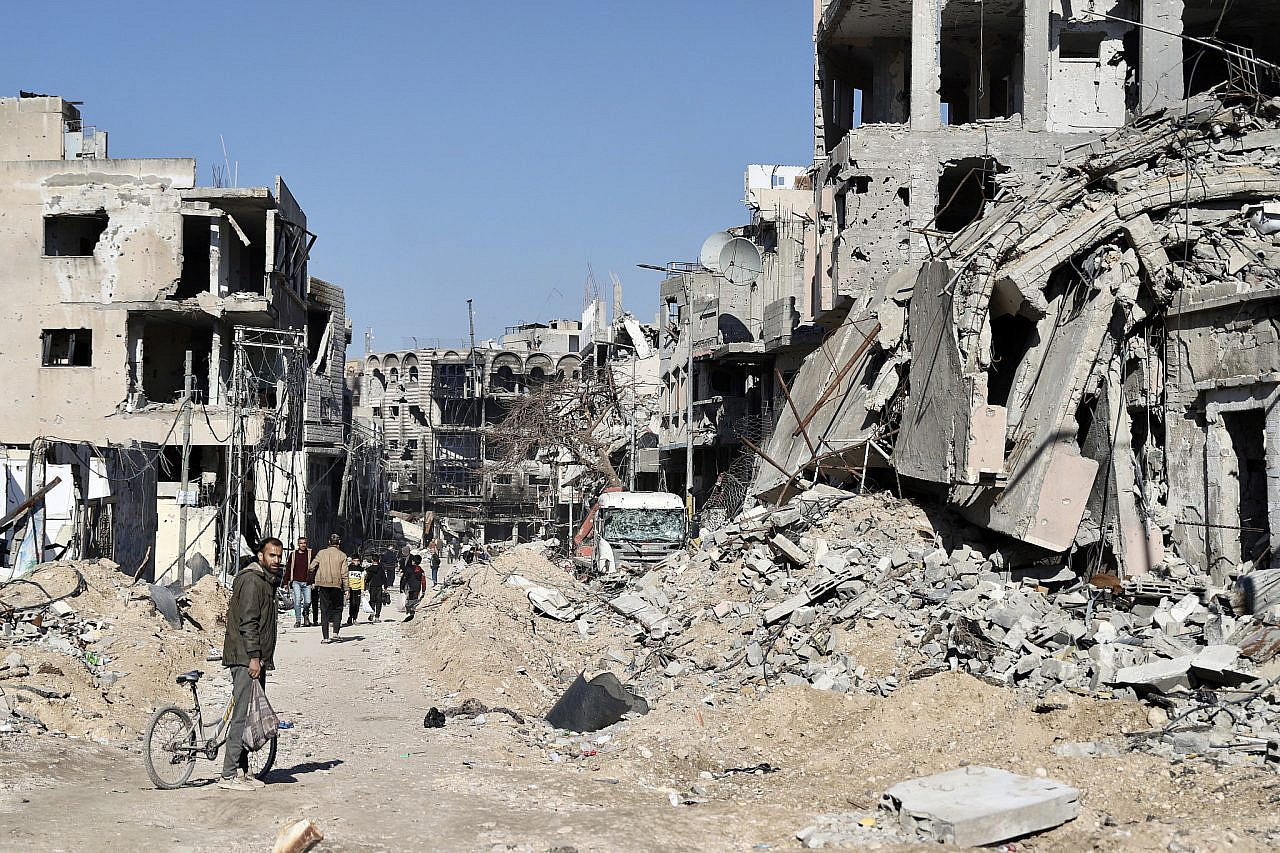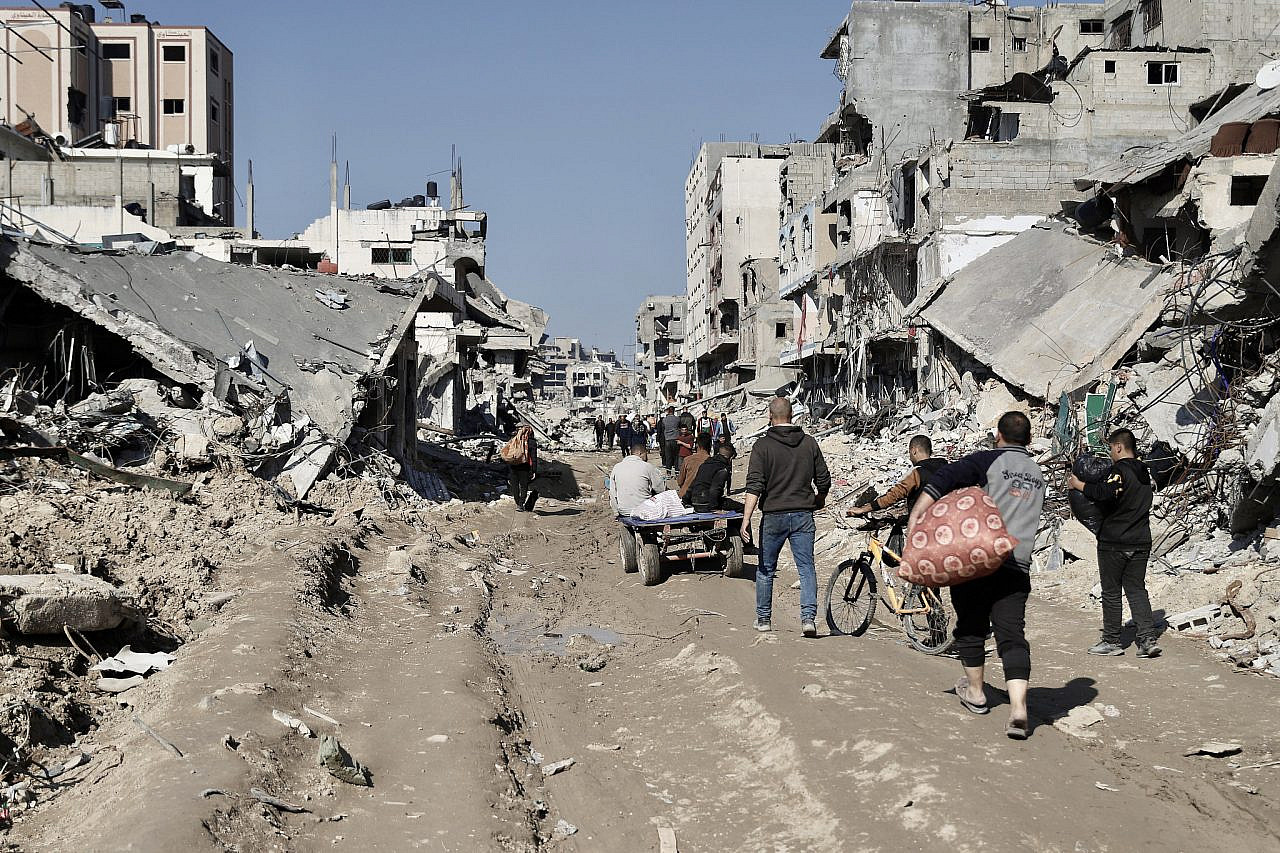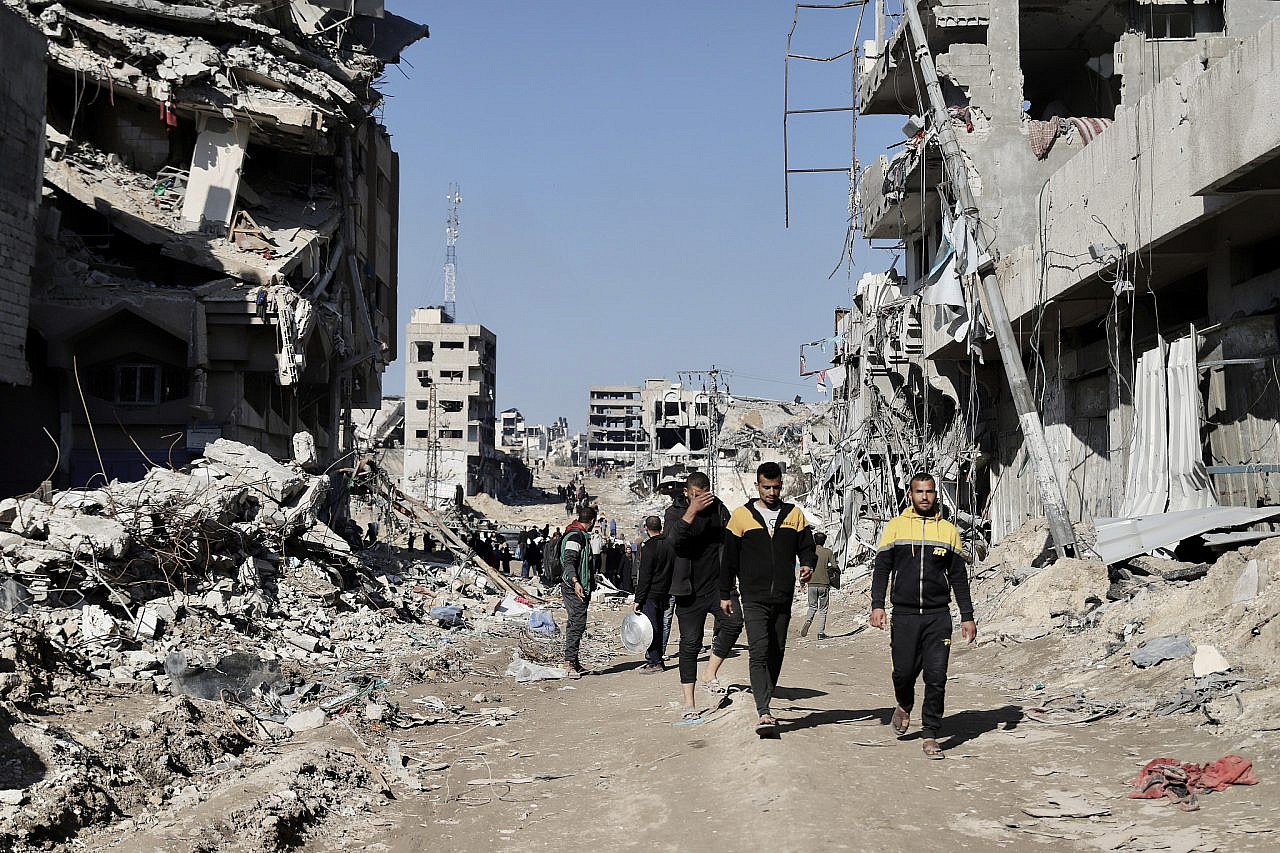More than five months after Israel ordered all Palestinians in the northern Gaza Strip to evacuate southward, around 300,000 remain. The majority are living in one neighborhood: Shuja’iya.
Located in the east of Gaza City, Shuja’iya has been a refuge both for some of its own residents and for many more Palestinians displaced from elsewhere in the north as a result of Israel’s aerial bombardment and ground assault. Until December, it remained the only neighborhood in northern Gaza that Israeli troops had not yet invaded; over the course of that month, Shuja’iya witnessed some of the most brutal Israeli attacks seen anywhere in the Strip.
That invasion, which began on Dec. 4 and ended on Dec. 22, inflicted a devastating toll on the neighborhood, leaving it bereft of virtually any semblance of life. Shuja’iya today is a scene of widespread destruction, with houses reduced to rubble and streets lying in ruin. Basic infrastructure — including all the neighborhood’s water lines — has been rendered nonfunctioning, plunging residents into further despair.
The Israeli army has not withdrawn completely from Gaza City: military vehicles can still be seen around the perimeter of the city, as well as stationed at the Netzarim checkpoint that bisects the Gaza Strip in two along Wadi Gaza. As such, Gaza City essentially remains under siege and disconnected from the rest of the Strip, while Israeli forces control the entry of scant humanitarian aid.
“I cannot describe the situation we are in now,” Nader Jerada, 33, told +972 with palpable frustration. “We are exhausted from hunger. I want to scream that we have no food. I have six children: six mouths to feed. Yesterday, my daughter was crying from hunger. I want to cut myself hearing her cry. Before the war, I used to help everyone and feed everyone, but look at us now: we’re eating raw wheat and barley, even bird feed — which, like everything else, is running out at the market. One kilo costs NIS 35 (around $10).”
Due to the scarcity of flour in the north, and Israel’s repeated attacks on crowds of Palestinians amassing to receive humanitarian aid, many residents like Jerada have been forced to resort to grinding up animal feed — which is often riddled with small insects — as a substitute. “It tastes terrible and is not fit for consumption, but we have no choice,” he said. “Tomorrow I will go to the south, instead of dying with my children in the north without food.”
“We have lost all dignity because of the war,” 22-year-old Shuja’iya resident Said Sweirki said. “We have become like animals. Our lives have no meaning, and no one cares for or values us in Gaza. We scream, starve, and die alone. Does the world know that we’re eating animal food? We live without the basic necessities of life: no electricity, no water, no fuel. We collect firewood for hours from the streets and destroyed houses. We’ve returned to the Stone Age.
“We wake up every morning searching for water,” Sweirki continued. “Everyone in the neighborhood carries empty containers, looking around for hours to find places to fill them. After that, we search for where there might be aid or where rice is available at a reasonable price.
“The worst thing is not the war; unfortunately, we’ve gotten used to wars,” he went on. “The worst is those who exploit these conditions to make money — the traders with no principles. Yesterday, I went to a man who sells water from his private well. I stood in line, and then he started shouting, ‘Water has become expensive, one gallon will be NIS 5 [around $1.50],’ when it used to be half a shekel. All I wish for is to leave this oppressive country.”
‘There’s nothing left for me to lose’
By Nov. 2, the Israeli army had fully besieged Gaza City, marking the start of its fierce invasion. Over the next two months, its forces went door to door, rounding up and detaining hundreds of men, committing massacres against civilians, and leaving a trail of destruction everywhere they went. Palestinians were shot for simply stepping out of their homes, even while attempting to flee the city. But it wasn’t until a month later that the tanks rolled into Shuja’iya.
On Dec. 4, Abu Khalil Habeib was at home with much of his extended family when Israeli troops invaded the neighborhood under cover of heavy artillery shelling. Among more than 90 relatives sheltering with him were the family of his brother, Hamdan, who had been displaced from the Al-Sha’af neighborhood.
“We all evacuated from the house, but after a few meters, Hamdan stopped and said to me, ‘I need to go back to get milk for my daughter because there’s none in the markets,’” Habeib recounted. Tragically, this decision was fatal: “He went back home, and we haven’t seen him since.”
Amid the chaos of the army’s invasion into Shuja’iya, the rest of the family continued on their journey. “We carried on walking until we reached the shelters in Al-Rimal [another neighborhood nearby]. We waited for hours, but [Hamdan] didn’t come,” Habeib continued. “We tried to contact him, but there was no phone service. By then, we anticipated that something bad had happened to him.”
The family lived with the painful void of Hamdan’s absence for two months, only to return home after the withdrawal of the army and make a heart-wrenching discovery. “We found Hamdan’s body in the middle of the street, appearing as if something had crushed it,” Habeib recalled, tears welling in his eyes. “An Israeli tank had run over his body, pulling his bones apart from his flesh.”
Still bearing the weight of grief, Habeib is afraid that they may have to flee Shuja’iya again as Israeli forces continue operating in the adjacent neighborhood of Zeitoun. “Yesterday, we couldn’t sleep due to the sounds of Israeli shelling and gunfire, as they are now less than a kilometer away,” he said. “We are preparing our belongings for evacuation, fearing the army’s approach and tanks surrounding us. We don’t want Hamdan’s fate to befall us too.”
Another family caught up in the chaos of Israel’s entry into Shuja’iya was that of Heba Salim Al-Shurfa, a 44-year-old who had already been displaced with her family from the Sheikh Radwan neighborhood earlier in the war. “On Dec. 4, I saw death with my own eyes, and until now, I don’t know how I survived,” she told +972. “Suddenly at dawn there was shelling and gunfire that didn’t stop, not even for a second. Glass windows shattered on top of us, and the house shook violently. It felt like the last moments of our lives.
“As daylight broke, the neighborhood filled with displaced people fleeing their homes, but no one knew where to go,” she continued. “The scene was terrifying; people were shouting, ‘Tanks at the junction — if you don’t leave now, they will besiege and kill or capture you.’”
Upon hearing this, Al-Shurfa explained, everyone fled the house she was staying in without a moment’s hesitation, and without even having time to check on each other’s whereabouts. After walking a few meters down the road, she suddenly realized her husband wasn’t with them — and since that day, she hasn’t seen him. “My husband is still missing,” Al-Shurfa lamented. “I know nothing about what happened to him. I wish he had been arrested or even killed. At least then I could bury him in a proper grave, to honor him and have a place our family can go to remember him.”
Al-Shurfa fled with the rest of her family to the neighborhood of Al-Rimal, before being forced to return to Shuja’iya when Israel raided that area too. Now, Al-Shurfa vows that she will not flee anywhere else, no matter the circumstances: “Even if they reach Shuja’iya [again], I won’t evacuate. There’s nothing left for me to lose or grieve for.”
‘We feel lost in a jungle’
Although the fighting in Shuja’iya has been scaled back since late December, the Israeli army continues to enter the neighborhood periodically, forcing residents to flee from one area to another each time. The number of casualties and missing people from Israel’s invasion is not yet fully known: with Israeli forces still besieging the neighborhood, no medical teams have been able to enter in order to evacuate the wounded or retrieve the dead. What did become clear to surviving residents upon the retreat of Israeli troops in late December, however, was the scale of the destruction.
Naser Bitar, a 31-year-old resident, lost both his home and his carpentry workshop in Shuja’iya as a result of Israel’s attacks. “An entire square was completely wiped out,” he told +972. “My house, my workshop, 12 other houses, and a mosque, all turned into rubble. When we came back after the army’s withdrawal, I couldn’t recognize where my house had been.”
Bitar had opened his workshop just a year before the war, dreaming of embarking on grand projects. “I wish I had only lost my home,” he said. “At least then I could work in the workshop after the war to build a new one.
“For five months, I haven’t received a single shekel,” Bitar continued. “Work stopped completely, and I spent all of my savings in the first months of the war. I don’t know what to do or how to tell my children that I have no money and no food. Prices are extremely high, and the market has limited supplies. Some international organizations claim they are working in the north to help us, but for me, since the beginning of the war, I haven’t received any assistance. I don’t know why aid is not being distributed well.”
In recent weeks, a trickle of humanitarian aid has reached some of the Palestinians besieged in northern Gaza, both through airdrops and truck convoys. Residents wait all night in the spot where aid is due to arrive, hoping desperately to bring something home for their families. Yet these gatherings can be highly dangerous, with Israeli forces opening fire on the crowds on multiple occasions and local gangs starting to interfere with the distribution.
Amjad Bassam, 19, was one of the lucky ones: in late February, he managed to take home two bags of flour from an aid convoy that reached the north. “I can’t describe the scene to you,” he said. “Thousands of people are waiting for flour. Everyone in Gaza is hungry. Despite our proximity to Israeli tanks, people ran at the aid trucks and seized whatever they could.” Getting his hands on flour for his family, he said, was “the best moment of my life in the war.”
Bashir Ishteiwi, 60, had no such luck. “From waiting in the sun on Salah al-Din Street to enduring freezing nights on Rashid Street, I couldn’t get flour even once,” he lamented. The elderly man lost two sons in the war, both killed in an Israeli airstrike; as a result, he shoulders the responsibility of caring for his grandchildren. But in a crowd of thousands of desperate, starving people, he stands little chance of coming away with anything.
Most read on +972
“The strong eat the weak,” Ishteiwi said. “Those armed with weapons control the flour. Gangs manipulate aid distribution, with no semblance of a system. In one instance, I managed to carry a bag of flour with my grandson. I walked a few meters, and a group of thugs stopped me, brandishing a knife and demanding that we give them the flour. I handed it over: I’m an old man, I don’t have the strength to confront anyone.”
“Gunfire from Israeli tanks, gangs wielding weapons, the cold, the fear — we endure all this for a mere bag of flour,” Ishteiwi’s grandson added. “Our situation in Gaza is reaching a point where we feel lost in a jungle.”

